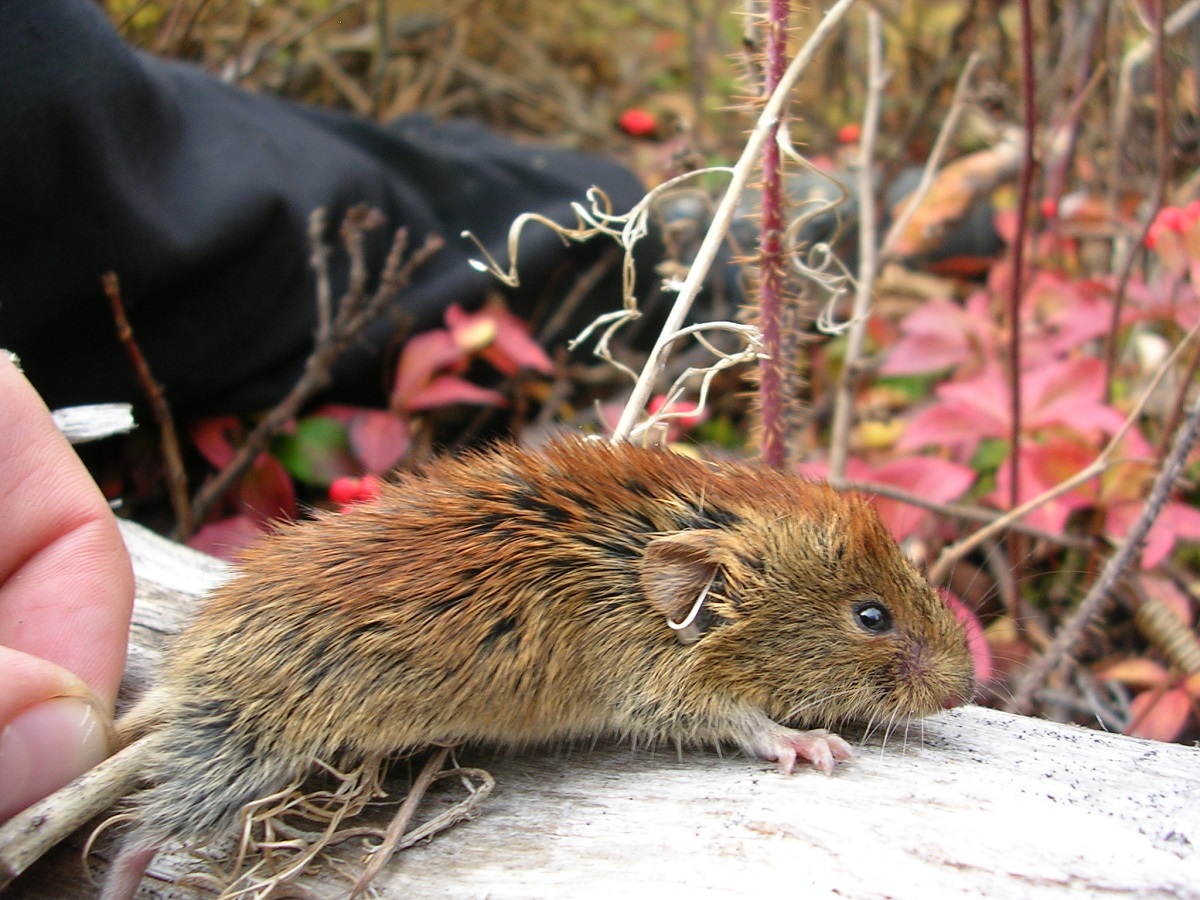
Name
- Common name: Vole
- Including:
- Northern Red-backed Vole (Myodes rutilus)
- Southern Red-backed Vole (Myodes gapperi)
- Eastern Heather Vole (Phenacomys ungava)
- Meadow Vole (Microtus pennsylvanicus)
- Tundra (Root) Vole (Microtus oeconomus)
- Long-tailed Vole (Microtus longicaudus)
- Taiga Vole (Microtus xanthognathus)
- Singing Vole (Microtus miurus)
- Order: Rodentia
- Family: Cricetidae
Also known as
Meadow mice, field mice
Viewing opportunities
- Voles are common throughout the Yukon with different habitats supporting different species.
- You are most likely to see a Red-backed Vole as its rusty red coat is distinguishable from others. They are common in the boreal forest. The differences between many species are very subtle so you will have to look closely to tell them apart.
- The species of Microtus voles often live in colonies that at times can “erupt” in numbers, providing for excellent vole-viewing opportunities for the lucky few in the right place at the right time.
Description
- Short chunky bodies.
- Very small ears that are almost hidden and small eyes.
- Short tails.
- Brown above and grey below.
Fast Facts
- Length: 8 to 23 cm
- Weight: 20 to 130 g, depending on the species
- Lifespan: 1 to 2 years
- Predators: Small mammals, birds of prey, weasels, marten, foxes, lynx
- Habitat: Throughout the Yukon depending on species
Conservation status
- Yukon: S4 or S5 (except Southern Red-backed Vole S2/S3)
- Global: G5 (Secure)
Yukon population estimate
Not determined.
Behaviour
Voles are excellent tunnellers in both the ground and under the snow. They do not hibernate in the winter but stay active in tunnels underneath an insulating layer of snow. They have incredibly high reproductive rates with females breeding continuously from May to August. The Red-backed Vole produces an average of 6 young every 3 weeks. Voles play a critical role in supporting the food chain in the north. Many mammals depend heavily on voles, particularly Red-backed Voles and Meadow Voles, as a staple in their diet.
Diet
Omnivorous: seeds, berries, roots, plant, insects and carrion.
Distribution
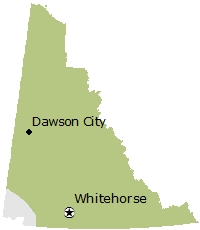
Sights and sounds
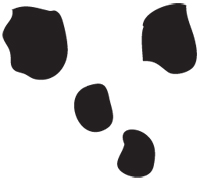
Vole tracks, front: 0.8 x 0.8 cm, hind: 1 x 0.8 cm.
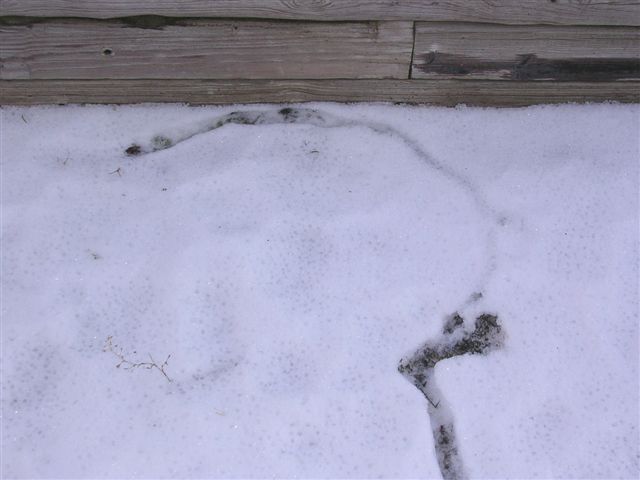
Tunnels evident after melting out.
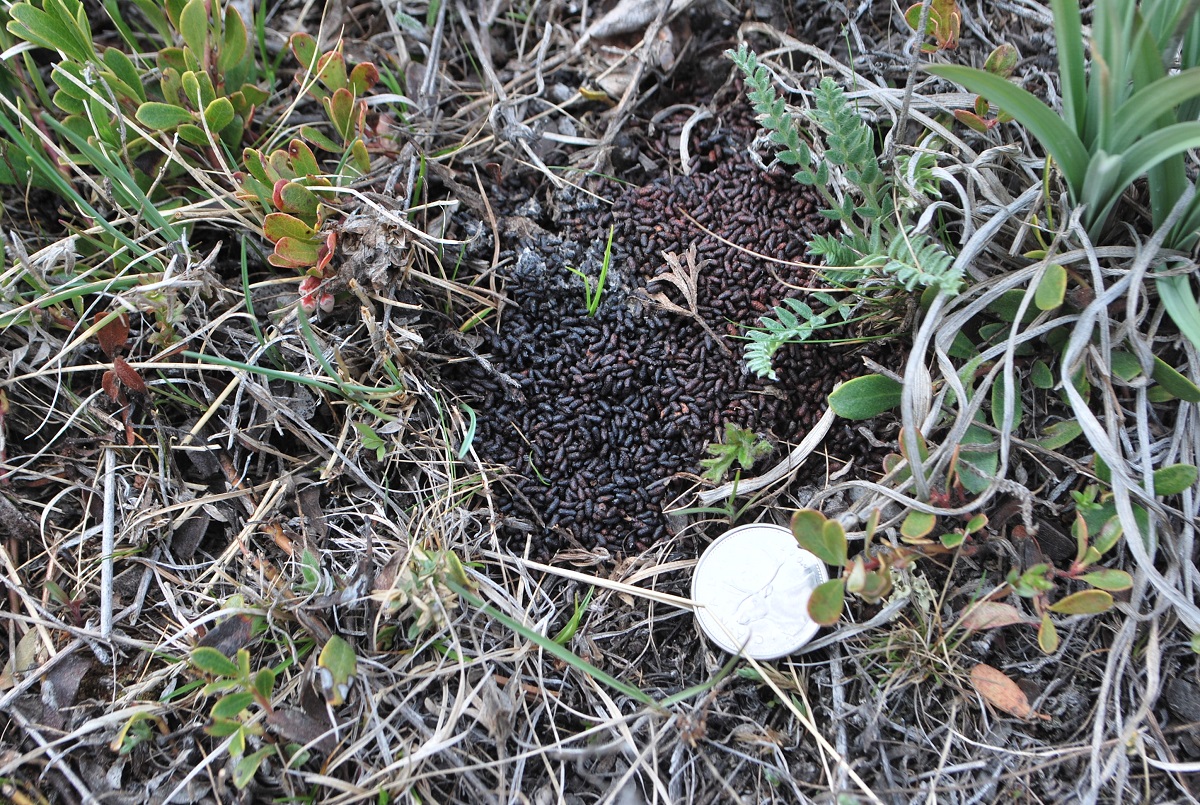
Oval pellets: 0.2 cm.
Voles and people:
- Some gardeners consider Voles a nuisance because they dig under vegetable gardens and lawns.